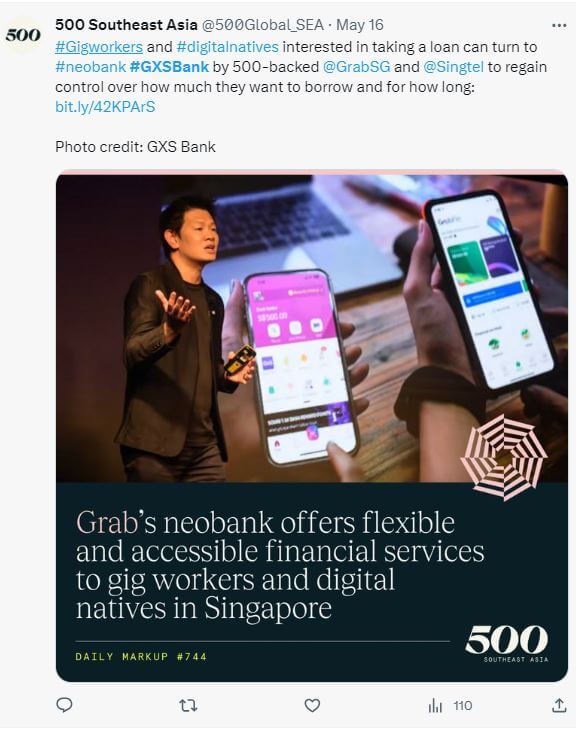
Digital banking is growing in Southeast Asia. (Image – Shutterstock)
Digital banks: What’s driving success in Southeast Asia?
- Digital banks have been experiencing high revenues in Southeast Asia.
- Singapore is leading the industry, but other ASEAN countries are catching up.
- Traditional banks are aware of the challenge but remain focused on their areas of expertise.
Digital banks are successful all over the world. While technology aids their success, digital banks’ convenience and superior customer experience also fuel their growth and preference among consumers and businesses.
There have been many successful digital banks. In Asia, India has been a leader in digital banking, especially in reaching out to the unbanked community. Today, there are many digital banks in the subcontinent, each catering to the specific needs of businesses and consumers.
In Southeast Asia, digital banking is expanding its influence. The Philippines, Indonesia, Thailand and Vietnam have been successful in reaching out to the unbanked community. The region is experiencing some of the highest revenues in the world in the digital banking industry.
Regulators have approved digital banking licenses, and traditional banks are seeking partnerships with fintech companies to offer embedded finance services. While Singapore has been the region’s biggest digital banking revenue driver, a Bloomberg analyst report stated that its slowing sales are enabling neighboring countries to catch up with it.
Nathan Naidu, an equity research analyst at Bloomberg Intelligence, explained that Singapore’s digital financial services sales could average an 8.3% rise annually from 2022-2025. Sales growth may taper to 3.3% in the following five years though, reducing Singapore’s contribution to the region from 34% to about 15%.
To understand more about the state of digital banks in Southeast Asia, Naidu and Sarah Jane Mahmud, senior equity research analyst, South & Southeast Asian banks at Bloomberg Intelligence share their views with Tech Wire Asia.
TWA: Should traditional banks be concerned about the rise and success of digital banks in Southeast Asia and Singapore especially?

Nathan Naidu, equity research analyst, technology, Bloomberg Intelligence
The region’s traditional banks are in a relatively good position to defend their market share as digital banks continue to emerge and grow, having been forced to accelerate the digital transformation of their products, services and operations during the coronavirus period as social distancing and lockdown measures changed consumer behavior forever.
Many banks, especially in Indonesia, have established their own digital banks as subsidiaries or developed innovative virtual banking platforms. During the pandemic, DBS’ digital-asset trading service, DDex, and UOB’s mobile-only bank, TMRW, were launched in Singapore.
Across Indonesia, Malaysia, Thailand, the Philippines and Vietnam, digital banks are typically targeting the subprime segment — unbanked and underbanked individuals — and millions of micro, small and medium-sized companies that struggle to gain access to credit. As such, digital banks can fill a market void as the region’s traditional banks largely focus on lower-risk corporate accounts.
That said, traditional banks that are slow to digitize are at risk of losing customers to other banks – be it traditional or digital – that can offer a more customer-focused and streamlined service.
In Singapore specifically, incumbent local banks DBS, OCBC, and UOB are poised to defend their 65% domestic deposit market share and foster asset growth after successfully digitizing their services during the Covid-19 lockdown.
The lifting of the retail deposit cap on GXS and Maribank in June to SG$75,000 (from SG$5,000) is unlikely to materially impact them. Customers are more likely to maintain their primary account with an incumbent bank, using digital banks for their secondary or tertiary accounts. Even if all five of Singapore’s digital banks held a joint SG$40 billion in deposits, they would still only have a collective 5% market share.
TWA: Why differentiation is key in Southeast Asia’s digital banking transformation

Sarah Jane Mahmud, senior equity research analyst, South & Southeast Asian banks at Bloomberg Intelligence
There is a significant opportunity for banks – incumbent or digital – to expand their customer network across Southeast Asia, with around 70% of the population either unbanked or underbanked. The region is also home to over 70 million micro, small and medium-sized companies that have large funding gaps. On top of having easy-to-use, customer-focused and streamlined solutions at hand, the ability to reach out to the most remote rural areas and provide financial education to such communities is key.
TWA: Does the role of Singpass facilitate e-KYC (know-your-customer) and speedy product rollouts, simplifying digital banking services?
Digital banks, and businesses in general, can leverage Singpass to onboard and authenticate customers, as well as obtain digital authorization and signatures. This eliminates the need for a physical presence or additional documents and photographs for identity verification. At the same time, it fulfills the regulator’s know-your-customer (KYC) and anti-money laundering requirements.Singpass, which covers name, address, phone number, income, employment and other data for over 97% of Singapore’s adult population, should empower the city’s digital banks to quickly roll out financial offerings to the underserved market. One such example is the instant approvals for services such as account opening, loans and credit card applications. In the case of Trust Bank, customers can open an account and get a digital card within three minutes.
TWA: How does embedded finance unlock loan and insurance opportunities? Do traditional banks focus on that too?
Embedded finance is essentially integrating financial services into customers’ online purchasing activities (e-commerce, food delivery, transport, etc.) at the point of purchase. The unbanked and under-banked segments, including micro-enterprises and gig workers, typically shunned by traditional lenders, are often heavy users of these digital services.
Digital banks with access to ecosystems of their parents could price the risks of services to these customer segments since their parent banks have developed capabilities to harness alternative data from within such ecosystems. Traditional lenders with such ecosystem strength, such as those acquired partially or fully by technology firms, are also well-placed to tap these segments.

GXS Bank in Singapore is a thriving digital bank.
TWA: How can digital banks scale up fast via cloud and their tech stack?
Digital banks’ technology stacks let them plug their products into customers’ purchasing journeys at the point of purchase, with potentially broad use cases across existing digital service users. Examples include: GXS Bank’s personal accident insurance offered to mobility customers and third-party liability insurance for drivers; MariBank’s working-capital loans and product liability insurance to e-commerce merchants, and shipping insurance for online shoppers; and Trust Bank’s 60-second instant loan for its existing card service clients.
Embedding financial products into partners’ businesses helps digital banks save on product distribution costs, while the use of cloud and standardized APIs also helps banks harness alternative data. Having real-time access to high-frequency data from e-wallets, buy-now-pay-later transactions and payments lets digital banks price the risk of services to individuals who lack conventional credit data. This is a unique user acquisition strategy that is not available to many incumbent banks.

Regulation is one of the key driving factors behind the growth in digital banking in Southeast Asia. (Image – Shutterstock)
TWA: How important is the role of regulators in ensuring digital banking services remain compliant?
Regulation is one of the key driving factors behind the growth in digital banking in Southeast Asia, providing a supportive framework to allow digital banks to scale up, while at the same time not weighing them down with the compliance and financial burdens typically bearing on traditional lenders.
Regulators in Singapore, Malaysia, the Philippines and soon Thailand have introduced progressive digital banking regulatory frameworks for digital banks, including a licensing regime. However, in the early years, the assets that a bank may hold are typically capped to balance financial innovation with consumer protection. Further, in Malaysia, a key requirement of the license is to foster financial inclusion – and this will ensure that the five banks that won the license last year focus on reaching out to the unbanked and underbanked communities.
Indonesia has no bespoke digital framework in place, though – digital banks must follow the same rules as traditional banks. In spite of this, the country’s digital banking sector is booming, with digital financial services revenue projected to reach US$8.6 billion by 2025.
The light-touch regulatory regime and absence of digital licenses cut red tape and ease compliance headaches for new entrants such as GoTo or Grab. However, with higher capital requirements for new standalone digital banks (10 trillion Rupiahs as compared to 3 trillion Rupiahs for a conventional lender), it could be more time-efficient and cost-effective for new entrants to buy a smaller, struggling bricks-and-mortar lender, leverage its consumer network, and rejig the company into a digital bank to work around the higher capital charge.
Indonesia’s new, more liberal foreign ownership rules should also help lure more overseas big tech companies to invest in turning around the country’s smaller, struggling banks.
READ MORE
- 3 Steps to Successfully Automate Copilot for Microsoft 365 Implementation
- Trustworthy AI – the Promise of Enterprise-Friendly Generative Machine Learning with Dell and NVIDIA
- Strategies for Democratizing GenAI
- The criticality of endpoint management in cybersecurity and operations
- Ethical AI: The renewed importance of safeguarding data and customer privacy in Generative AI applications






